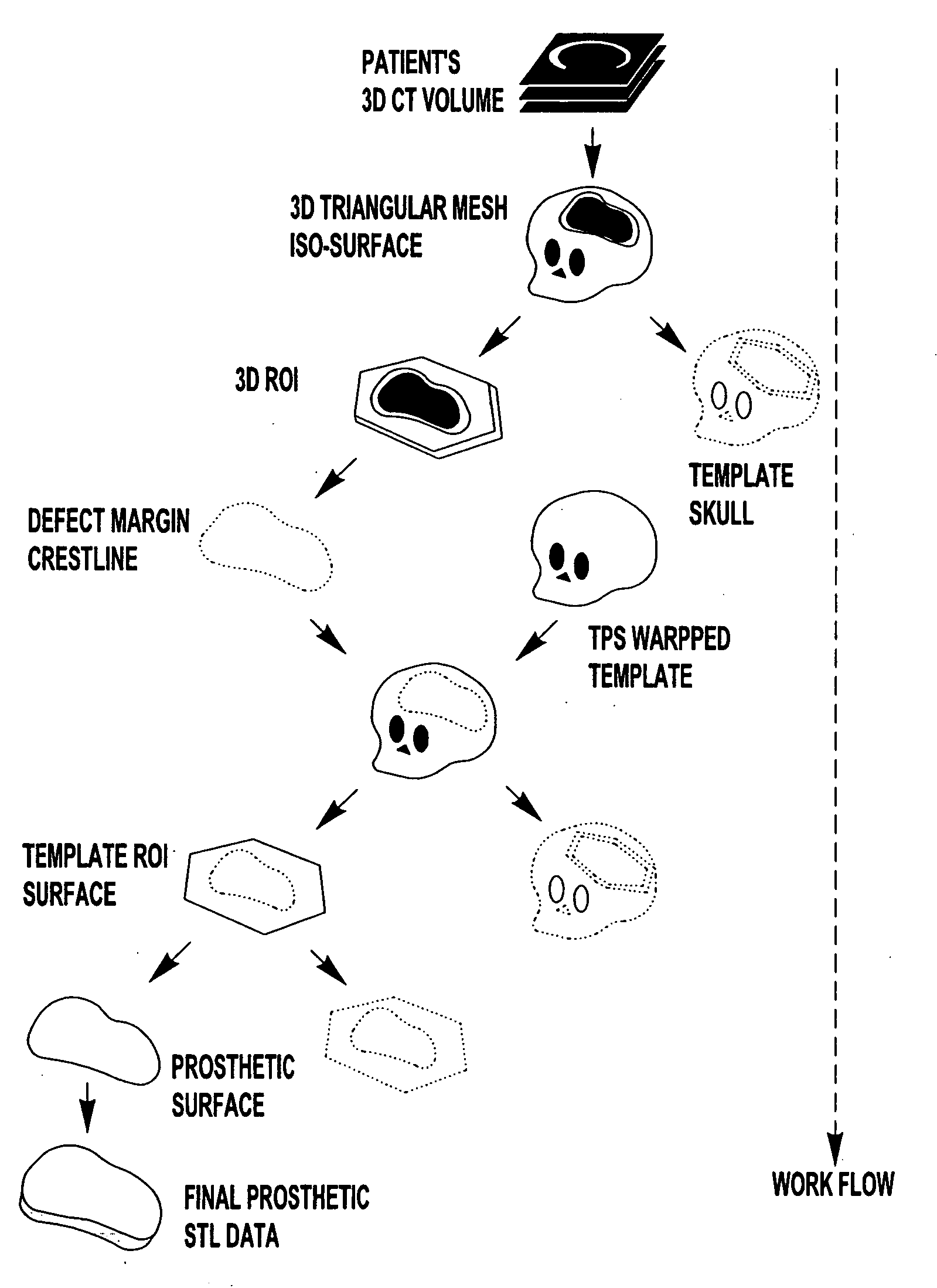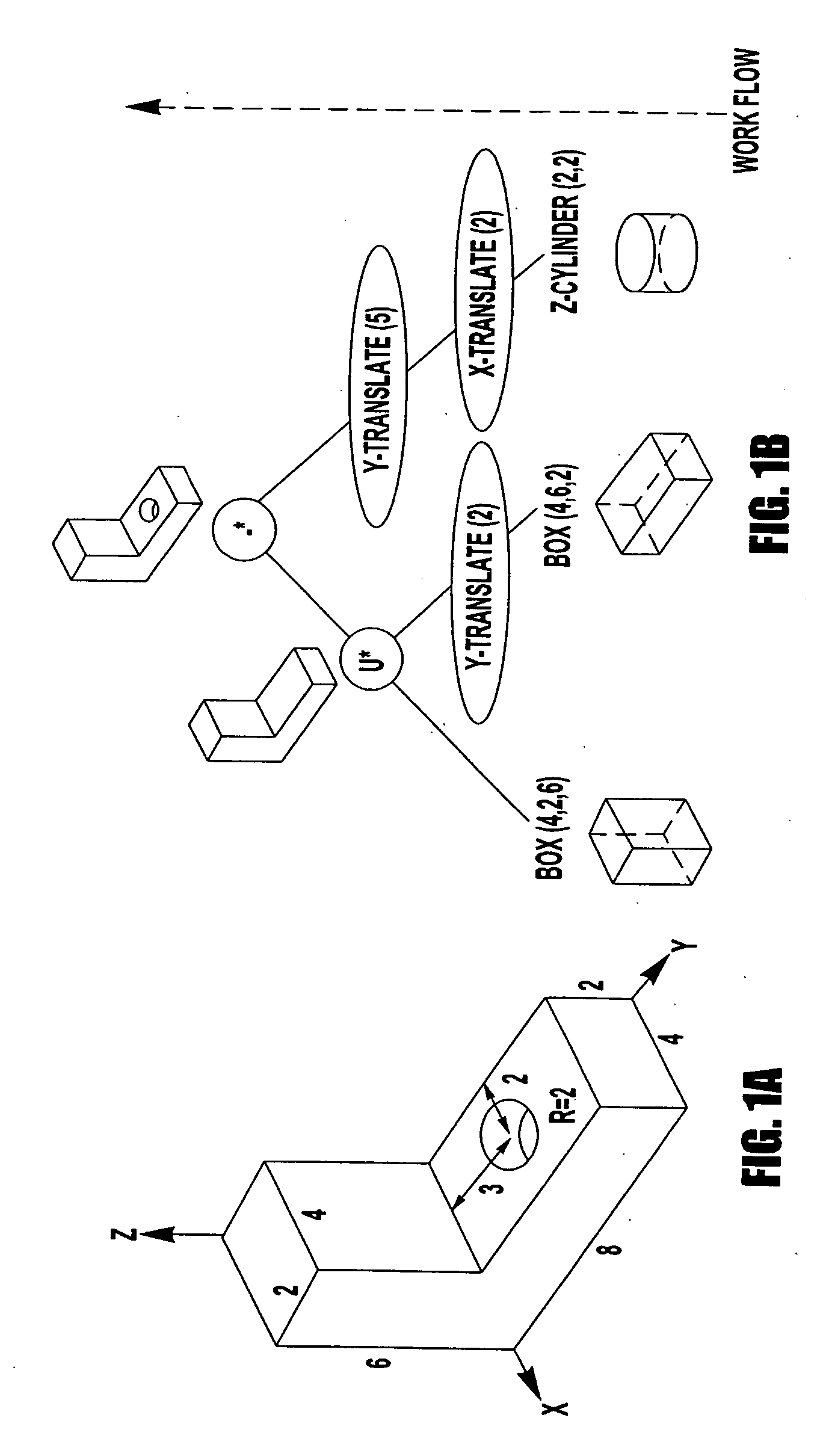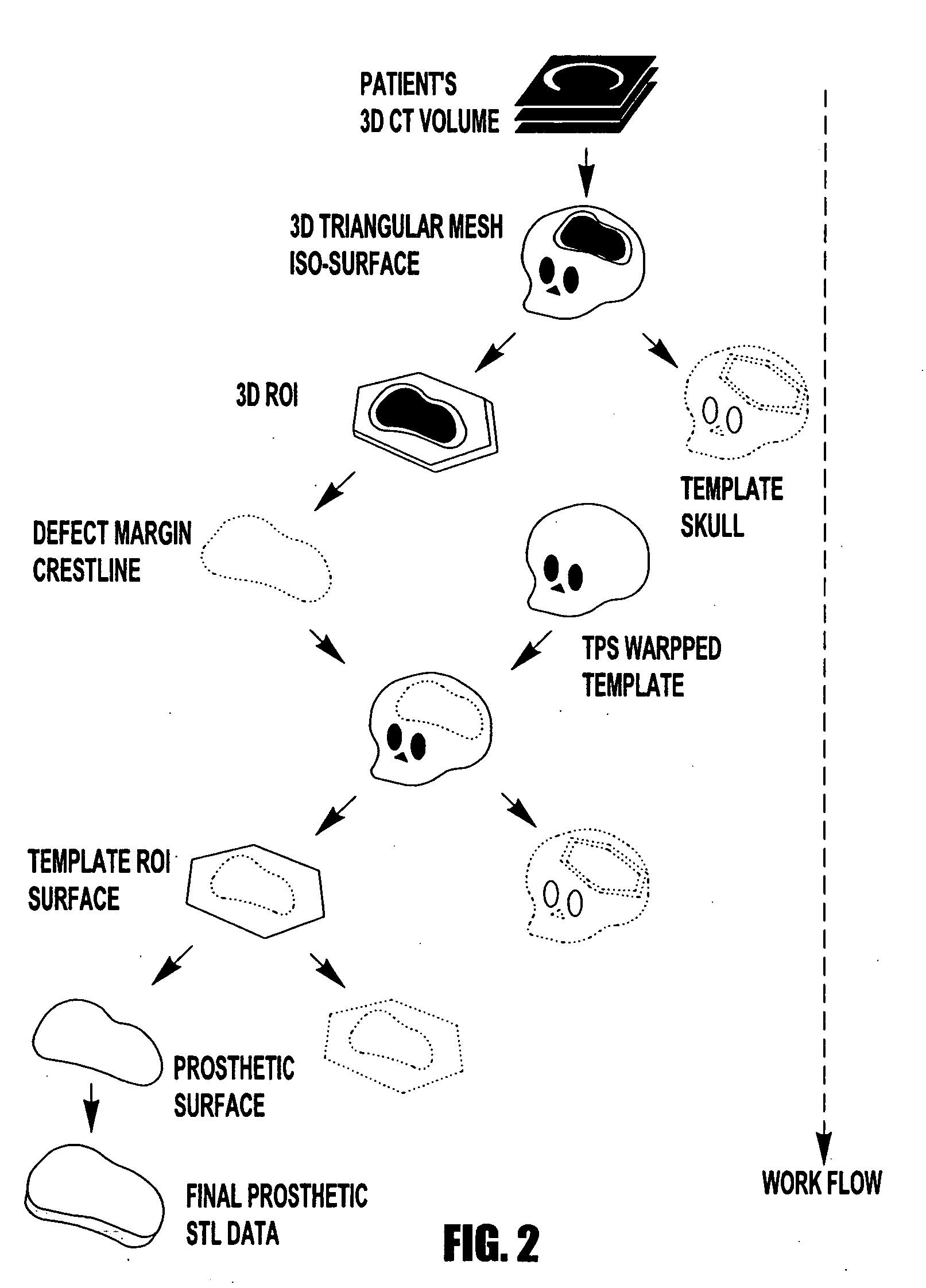Computer-aided-design of skeletal implants
a computer-aided design and implant technology, applied in the field of cranial implants, can solve the problems of difficult computer-aided design of patient-specific implants, and their production prior to surgery, and achieve the effect of maintaining surface curvature continuity
- Summary
- Abstract
- Description
- Claims
- Application Information
AI Technical Summary
Benefits of technology
Problems solved by technology
Method used
Image
Examples
case 1
eral Cranial Defect
[0205] In a case where the defect is located unilaterally, the left-right mirror image of the patient's original skull isosurface image is left to become the skull template surface. For appropriate left-right mirroring, the patient needs to lie in a supine (i.e., on their back) position during the CT scanning process. This pose allows for all axial slices to be close to perpendicular of the patient's right-left plane. This will avoid top-to-bottom or front-to-back mirroring. Following appropriate left-right mirroring, geometric translation of the centroid of the left-right mirrored skull template to the original cranial isosurface centroid results in a rough match since the scaling factors are identical.
[0206] The displacement is due to the patient not lying in a fully supine position, tilting of other axes that are parallel to the patient's head, and non-ideal symmetry of the human cranium. These parameters are rarely adjusted during the CT-scanning phase, causi...
case 2
Spanning the Center of the Cranium
[0208] Cranial defects spanning both sides of the skull leave too little anatomy to provide sufficient biological homology in a left-right mirrored image. In these cases, an average skull template surface is used. Unlike a mirrored template surface, the average skull image must be scaled to an appropriate size and reoriented for the patient's reference frame. For this reason, the Procrustes superimposition method is used to match the skull template so that the two differently sized cranial images can be initially aligned. Because the Procrustes superimposition method also requires two sets of biologically homologous landmark configurations, an operator must manually prepare them as well. As with the case for a left-right mirrored template, the resized average template surface is then deformed via TPS warp to provide a useful registration.
Skull Template Registration Tools
[0209] In order to deform the cranial template surface to the patient's skull...
verification and modification
Implant Taper Verification and Modification
[0298] The taper should accurately contact the cranial defect, but should not penetrate surrounding boney structures. We evaluate the amount of taper contact with the patient's polygonal mesh isosurface image is before producing the final implant shape. Once again the RAPID collision detection algorithm is employed to numerically and visually determine the degree of intersection between the tapered edge surface and the defect site. For computational efficiency, the 3D ROI that includes the cranial defect site acquired from the full skull image prior to the cranial defect margin crestline identification step above is reused.
[0299] Although the RAPID algorithm is capable of detecting collisions occurring between pairs of triangles. FIG. 29 depicts intersecting regions between the potential implant taper and the cranial defect site as detected by the RAPID algorithm. The shaded region represents the bony tissue structure of the cranial defect...
PUM
 Login to View More
Login to View More Abstract
Description
Claims
Application Information
 Login to View More
Login to View More - R&D
- Intellectual Property
- Life Sciences
- Materials
- Tech Scout
- Unparalleled Data Quality
- Higher Quality Content
- 60% Fewer Hallucinations
Browse by: Latest US Patents, China's latest patents, Technical Efficacy Thesaurus, Application Domain, Technology Topic, Popular Technical Reports.
© 2025 PatSnap. All rights reserved.Legal|Privacy policy|Modern Slavery Act Transparency Statement|Sitemap|About US| Contact US: help@patsnap.com



